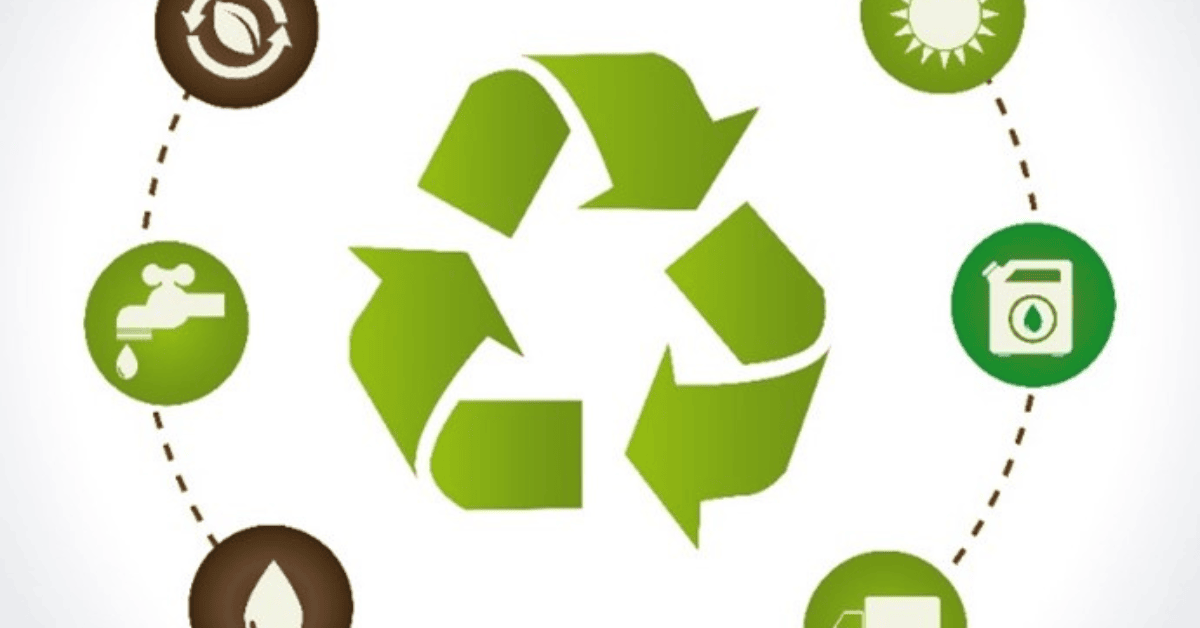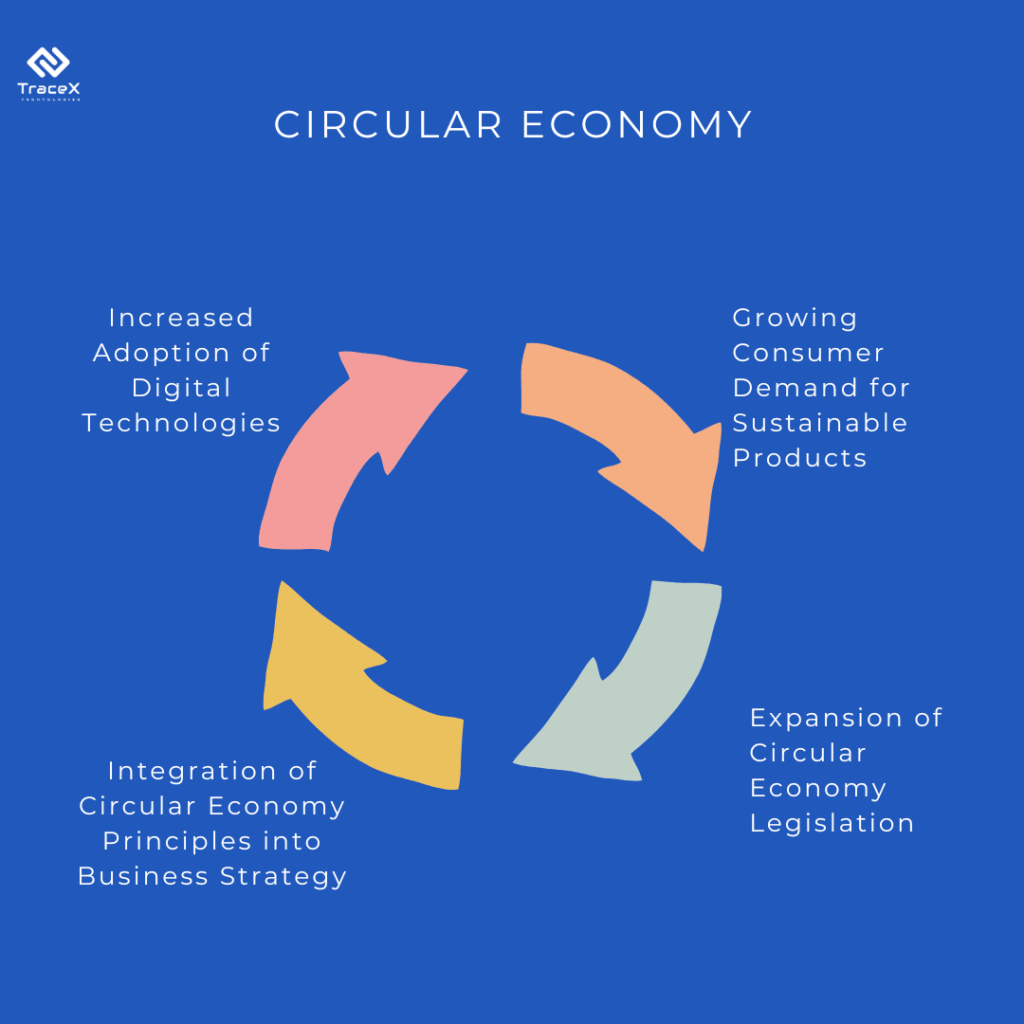Contact: +91 99725 24322 |
Menu
Menu
Quick summary: Discover how the circular economy can drive sustainable business success. Learn how adopting circular practices can reduce costs, enhance resilience, and contribute to a greener future.

Imagine a world where waste isn’t just minimized, but virtually eliminated—where every product is designed to be reused, repurposed, or regenerated. This is the promise of the circular economy, a revolutionary approach to business that challenges the traditional “take, make, dispose” model. But for many businesses, the transition feels daunting, as they grapple with the inefficiencies and environmental damage of their current operations. The pain is real: escalating costs, resource scarcity, and growing consumer demand for sustainability are pushing companies to rethink their strategies.
Embracing the circular economy isn’t just a necessity—it’s an opportunity to innovate, lead, and build a more resilient future.
In today’s world, where environmental concerns are at the forefront of global discourse, businesses are increasingly recognizing the need to shift from traditional linear models of production and consumption to more sustainable practices. One of the most promising and impactful approaches to achieving this is the circular economy.
At its core, the circular economy is a system designed to minimize waste and make the most of resources. It represents a fundamental shift in how we think about production and consumption, moving away from the traditional ‘take-make-dispose’ model towards one that is regenerative by design.
1. Designing out waste and pollution: Products and processes are designed with the intention of eliminating waste from the very beginning. This might involve using materials that are easily recyclable or biodegradable, or designing products that can be easily disassembled and reused.
2. Keeping products and materials in use: Instead of discarding products after use, the circular economy encourages businesses to find ways to keep materials in circulation. This could mean repairing or refurbishing products, recycling materials, or creating products that can be easily repurposed.
3. Regenerating natural systems: The circular economy goes beyond just reducing harm—it aims to have a positive impact on the environment. This involves using renewable resources, restoring ecosystems, and designing processes that contribute to the health of the planet.
Adopting a circular economy requires a fundamental revaluation of business strategy. Instead of a linear model focused on consumption and waste, a circular approach prioritizes resource efficiency, product longevity, and waste minimization. This necessitates a systemic shift in business operations, from product design to supply chain management.
The circular economy offers a wide range of benefits for businesses, society, and the environment.
One of the most significant benefits of the circular economy is its emphasis on resource efficiency. By reusing materials and designing products for longer life cycles, businesses can reduce their reliance on raw materials. This not only lowers costs but also helps to mitigate the risks associated with resource scarcity, which is becoming an increasingly pressing issue as the global population grows and demand for resources rises.
The circular economy plays a critical role in reducing environmental impact. By designing out waste and pollution, businesses can significantly decrease their carbon footprint and reduce the amount of waste sent to landfills. Additionally, by regenerating natural systems, the circular economy helps to restore ecosystems, promote biodiversity nurturing sustainable business practices and contributing to a healthier planet.
The transition to a circular economy opens up new economic opportunities for businesses. By developing innovative products and services that align with circular principles, companies can tap into new markets and meet the growing demand for sustainable goods. The circular economy also encourages the creation of new business models, such as product-as-a-service, where customers pay for the use of a product rather than owning it outright.
In an era where consumers are increasingly concerned about sustainability, businesses that embrace the circular economy can enhance their brand reputation. By demonstrating a commitment to sustainability, companies can build trust with customers, attract new audiences, and differentiate themselves from competitors.
The circular economy promotes resilience by reducing dependence on volatile raw material markets and supply chains. By keeping resources in use for longer and reducing the need for new materials, businesses can better weather market fluctuations and maintain stability in the face of economic uncertainty.
The world loses one-third of the food produced for human use. This equates to roughly 1.3 billion tonnes each year, or US$1 trillion. In terms of the effect caused to the environment, the total food waste amounts rank as 3rd largest producer of carbon dioxide. Around 40% of such losses occur post-harvest and in processing. Today’s food system has an enormous social and environmental footprint starting from climate change to food waste, water availability to inequality and healthy living to biodiversity loss. USD 5.7 trillion costs are due to the linear nature of food production which utilizes finite resources, pollutes them and harms the natural systems.
Circular economy offers a vision for a fit future for all with a healthy food system. Circularity in agriculture is a system of regeneration that aims to minimize waste by making the most out of resources available. It aims to keep the supply chain in a closed loop of maximizing product life and reducing waste. It is performed through sustainable and natural modes of regeneration, in a way that by-products are reused in a different cycle to minimize inputs and reduce waste.
The circular economy promotes elimination of waste and use of natural resources that can yield up to $4.5 trillion in economic benefits to 2030.
One of the most effective ways to adopt the circular economy is to redesign products with circularity in mind. This involves considering the entire lifecycle of a product, from raw material extraction to end-of-life disposal and finding ways to minimize waste and keep materials in use. For example, businesses can design products that are easy to disassemble, repair, or recycle, or use materials that have a lower environmental impact.
Traditional business models often focus on selling as many products as possible, but the circular economy encourages businesses to think differently. Companies can explore new models such as product-as-a-service, where customers pay for access to a product rather than owning it. This not only reduces waste but also creates new revenue streams and fosters closer relationships with customers.
The circular economy requires collaboration across the entire value chain. Businesses can benefit from building strong partnerships with suppliers, customers, and other stakeholders to support circular practices. For example, companies can work with suppliers to source sustainable materials, collaborate with customers to develop take-back programs, or partner with other businesses to share resources and reduce waste.
The circular economy is pivotal in helping businesses achieve their net zero goals by fostering practices that minimize waste and optimize resource use. By designing products for longevity, repairability, and recyclability, businesses can significantly reduce their carbon footprint and lower emissions associated with manufacturing and disposal. This approach not only supports net zero targets by reducing the need for new raw materials and cutting down on waste but also aligns with a nature positive economy by preserving natural ecosystems and reducing environmental degradation. By integrating circular economy principles, companies can enhance their sustainability efforts, drive innovation, and contribute to a more resilient and regenerative future for both the planet and their operations.
Technology plays a crucial role in enabling the circular economy. Businesses can leverage digital tools to track and manage resources, optimize supply chains, and improve transparency. For example, blockchain technology can be used to verify the origin of materials and ensure that they are sourced sustainably, while data analytics can help companies identify opportunities for waste reduction and resource efficiency.
Many businesses around the world are already embracing the circular economy and demonstrating its potential to drive sustainability and innovation.
Patagonia, the outdoor clothing company, has long been a leader in sustainable business practices. The company has embraced the circular economy by designing durable products that are built to last and offering repair services to extend the life of its products.
IKEA, the global furniture retailer, has committed to becoming a fully circular business by 2030. The company is redesigning its products to be more sustainable, using renewable and recycled materials, and offering services such as furniture leasing and buy-back programs.
The TraceX Sustainability platform is at the forefront of enabling the circular economy by harnessing the power of technology to create more transparent and efficient supply chains. With its blockchain-powered traceability solutions, TraceX allows businesses to verify the origin of materials, ensuring they are sustainably sourced and aligned with circular economy principles. This immutable ledger system enhances trust and accountability across the supply chain, from raw material extraction to end-of-life management. Additionally, TraceX’s advanced data analytics tools help companies identify key opportunities for waste reduction and resource efficiency, allowing them to optimize processes and minimize their environmental impact. By providing a comprehensive and integrated platform, TraceX empowers businesses to embrace the circular economy, drive sustainability, and build a more resilient and responsible future.
Explore our Sustainability Platform
The circular economy represents a fundamental shift in how we think about production, consumption, and sustainability. As more businesses recognize the need to move away from the linear economy and embrace circular practices, the potential for positive environmental, social, and economic impact is enormous.

These trends point towards a future where the circular economy is not just a niche concept but a mainstream approach to business, driving innovation, reducing environmental impact, and creating a more sustainable and resilient global economy.
Embracing the Circular Economy: A Path to Sustainable Success
In conclusion, adopting a circular economy approach is not just a trend—it’s a strategic necessity for businesses aiming to thrive in a resource-constrained world. By embracing principles that prioritize reuse, regeneration, and sustainable resource management, companies can reduce costs, mitigate risks, and unlock new opportunities for innovation. The transition may be challenging, but the rewards are substantial: a more resilient business model, enhanced brand reputation, and a significant contribution to a more sustainable future. Now is the time for businesses to lead the way in the circular economy, turning challenges into opportunities and paving the path to long-term success.
